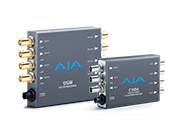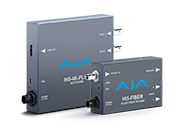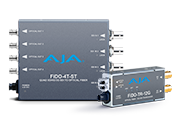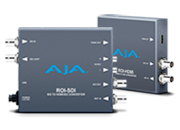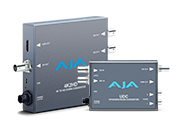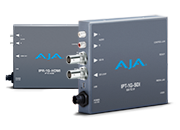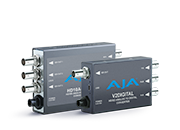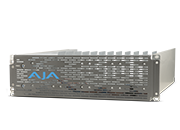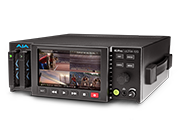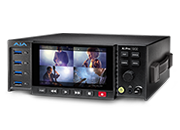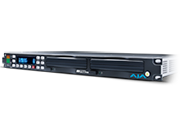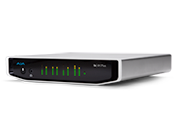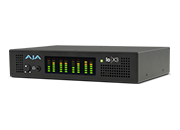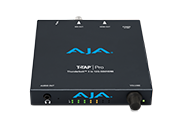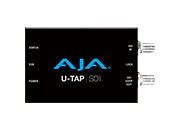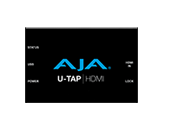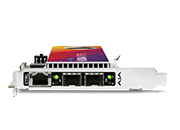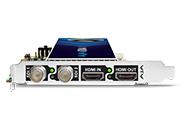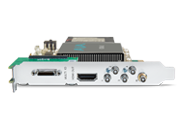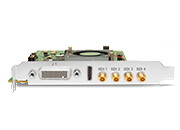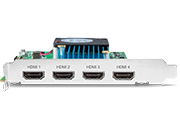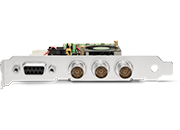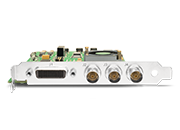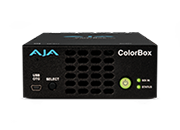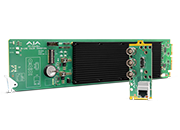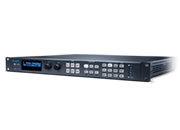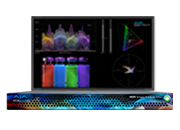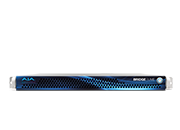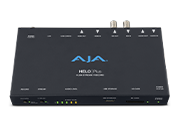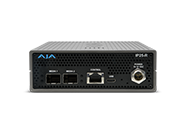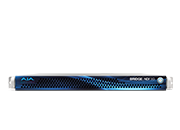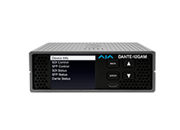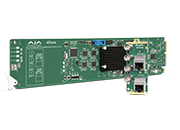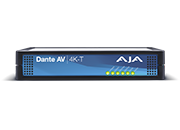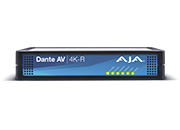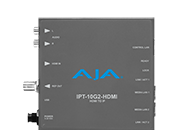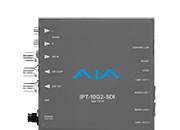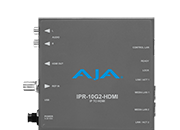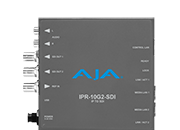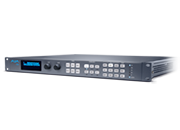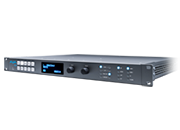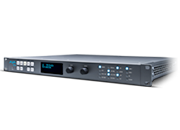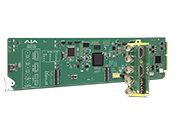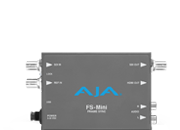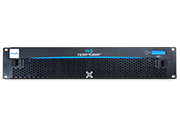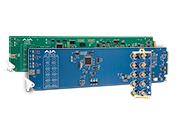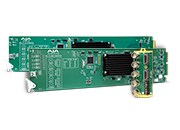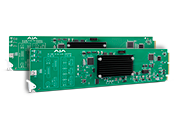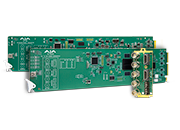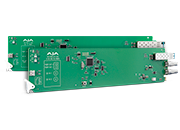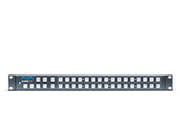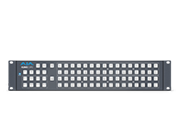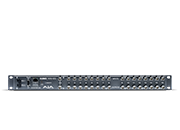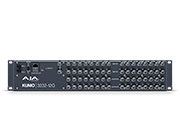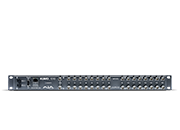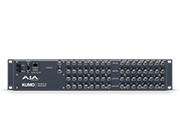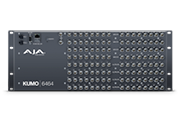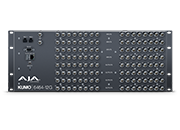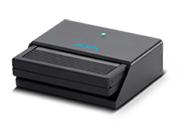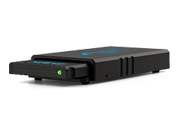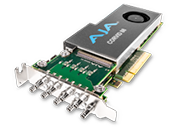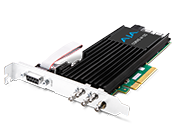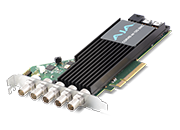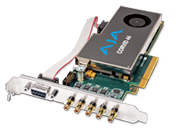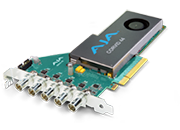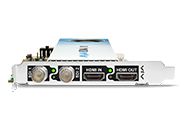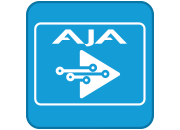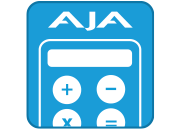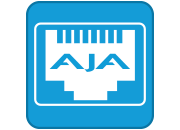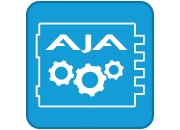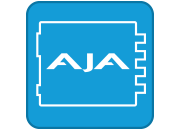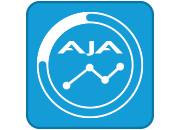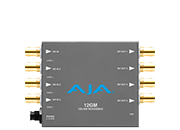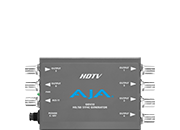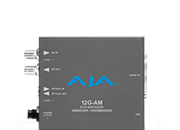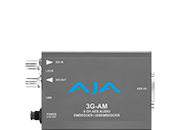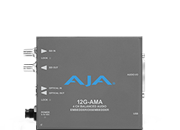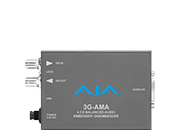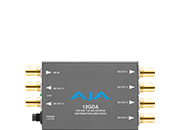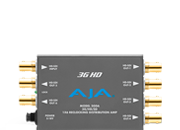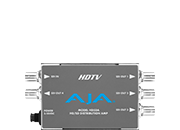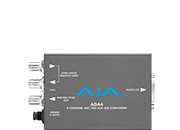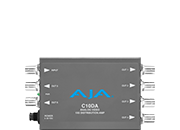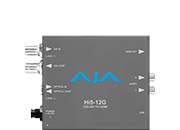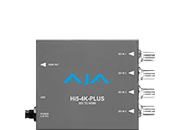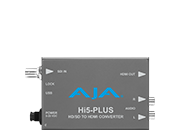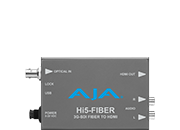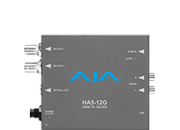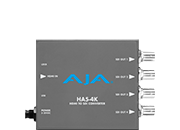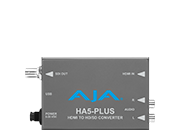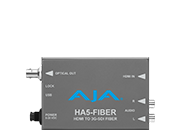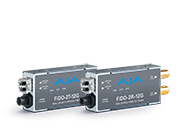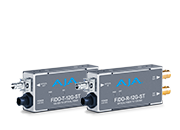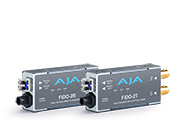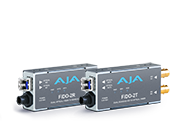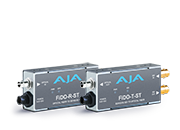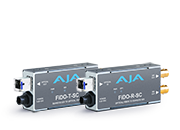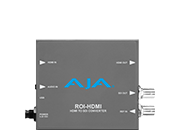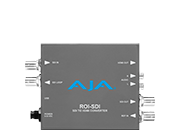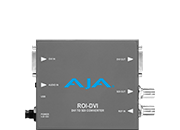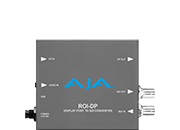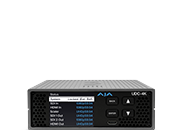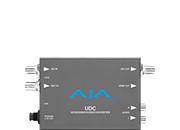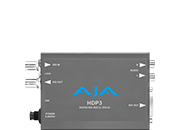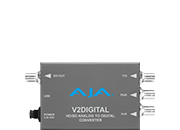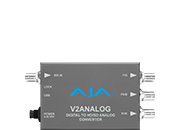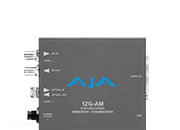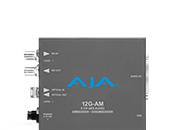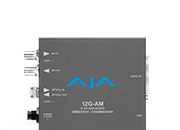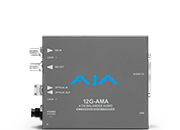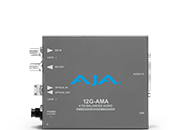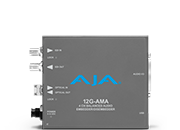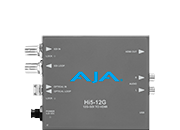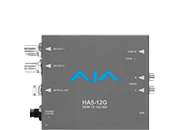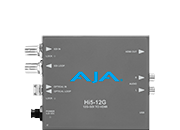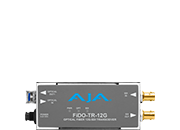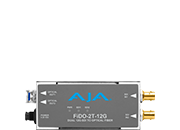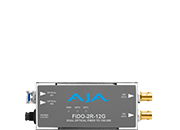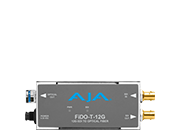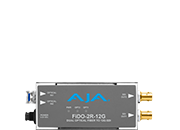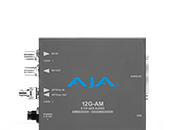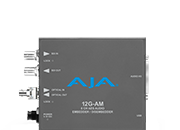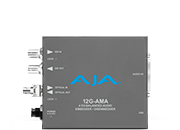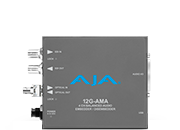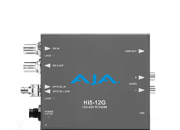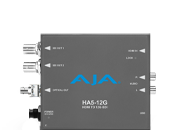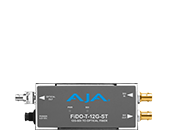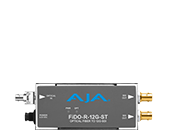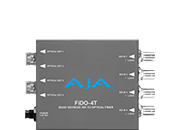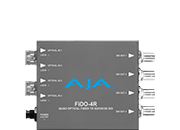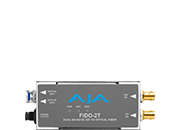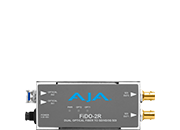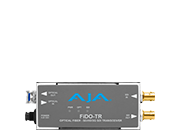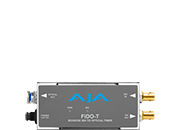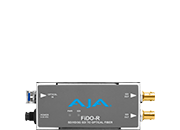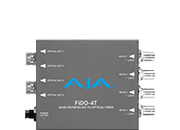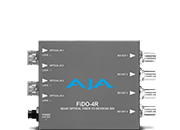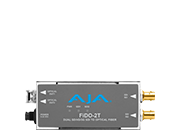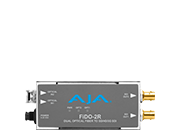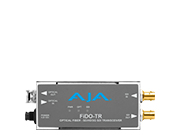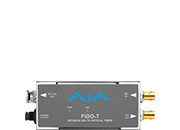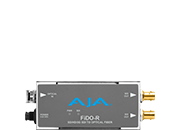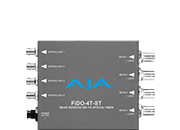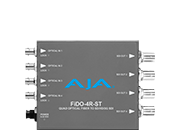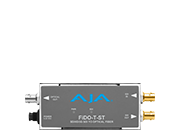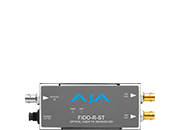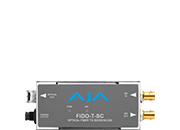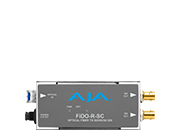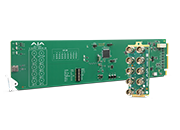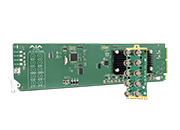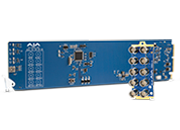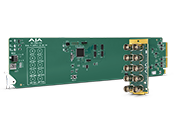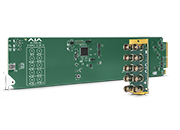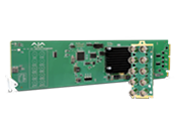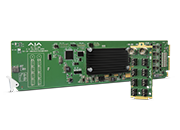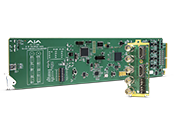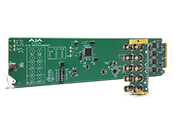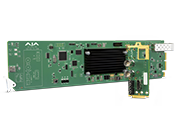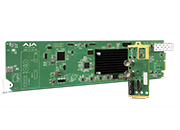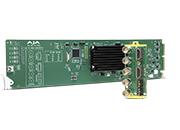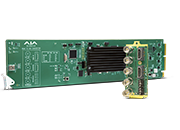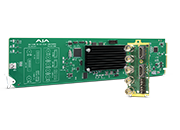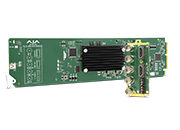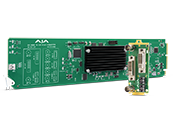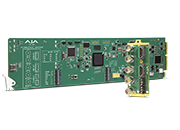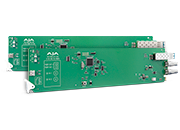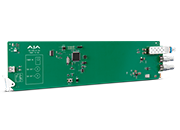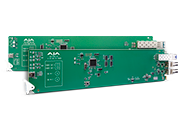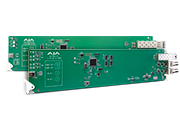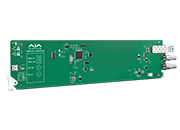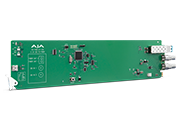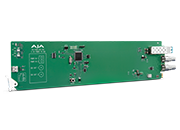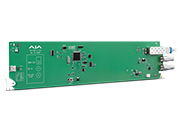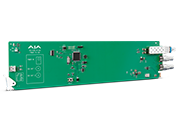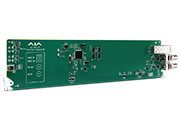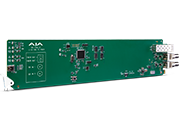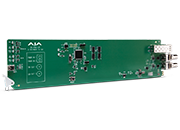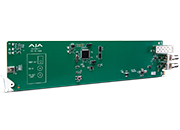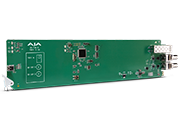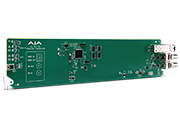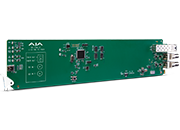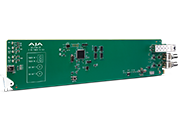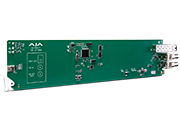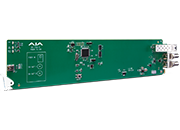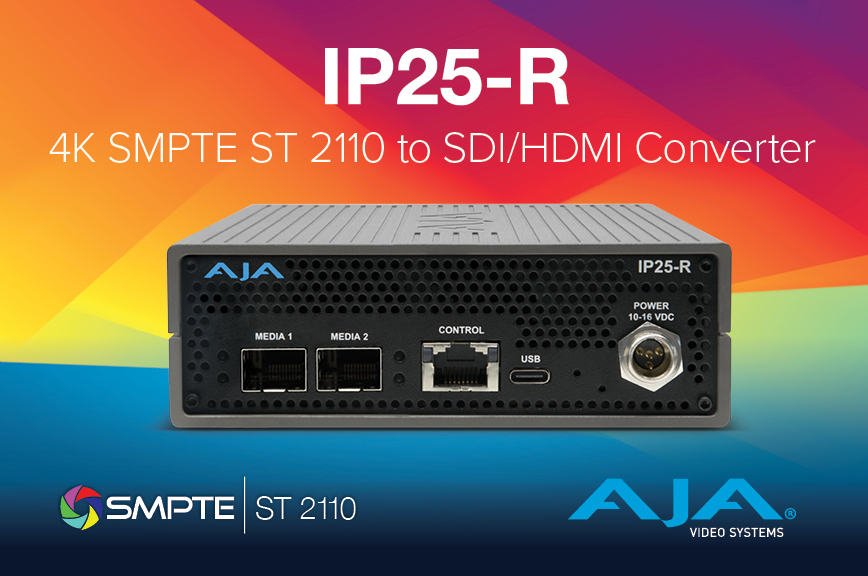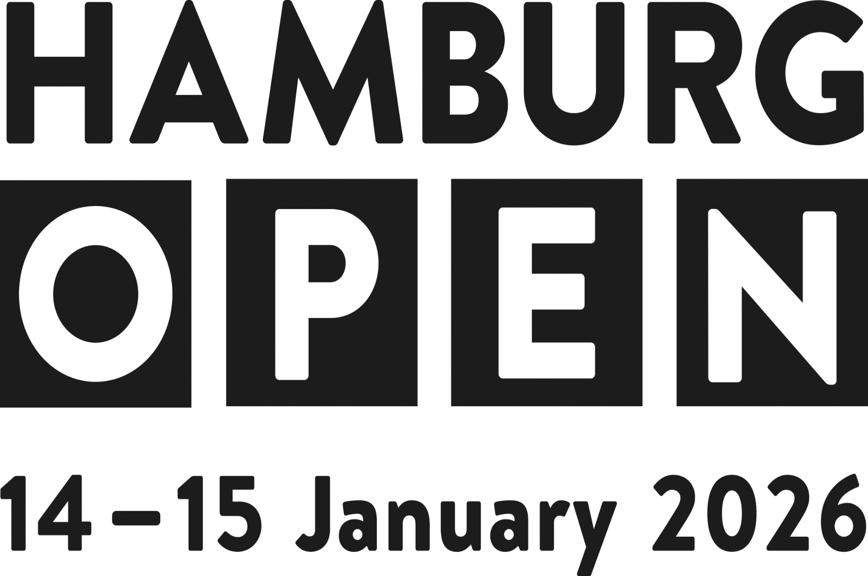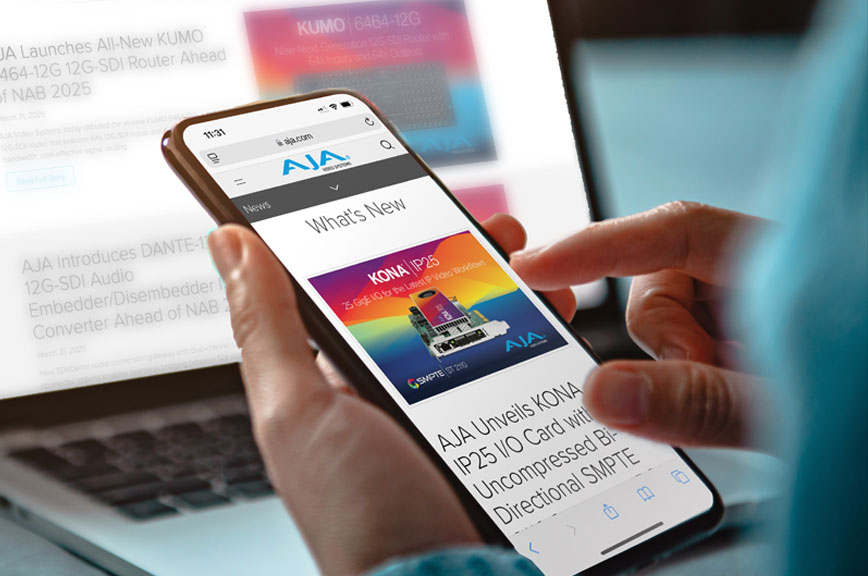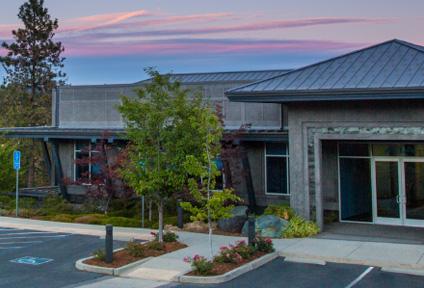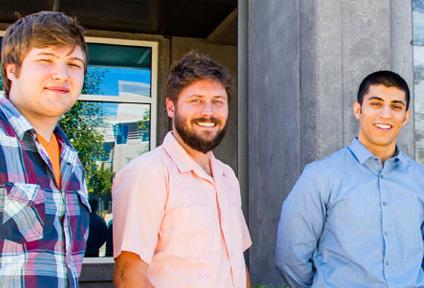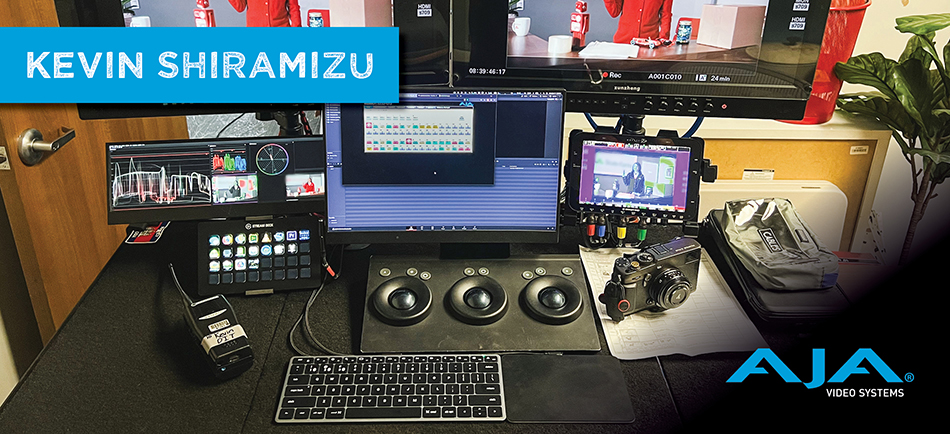The Ins and Outs of On-Set Production with DIT Kevin Shiramizu
December 14, 2023
Creative production is a microcosm of the real world in the eyes of Digital Imaging Technician (DIT) Kevin Shiramizu. He finds joy in using his work as a medium for empathy and to share the human experience, a dream job that he says he feels very lucky to have. We were able to grab some of his time between commercial projects to talk about his work, and how he’s using AJA routing and conversion gear on set in a role that’s constantly evolving. Check out the interview highlights below:
How’d you become a DIT?
I studied film at the University of Colorado, where I thought I’d spend my entire career in a dark room. I swore I’d never move to LA and work in showbiz. Yet, here I am ten years later, and I don’t regret it. I started out as a production assistant, then became an assistant cameraman. I tried other departments but came back to the DIT role because it best fit my skill set. I get to combine a little bit of creativity with a lot of technical execution to help everyone get through the day, which I love.
What’s your role on set?
I’m a liaison between production and post, so I'm on set troubleshooting everything from the image sensor through to the hard drives, and signal path to process the image and distribute it to monitors around the set. On commercials, I'm also managing the data, so I'm doing loading duties and coordinating with post to make sure that they're getting what they need. I primarily collaborate with the director of photography (DP) to help their vision be seen right by everyone – whether on the video tape recorder VTR monitors, iPads, or monitors the director are using – but I also support the camera department and work with the assistant cameraman, digital dailies, and VTR operators.
Why is the DIT role important to modern productions?
As we’ve moved toward digital workflows, production has become infinitely complex, so it’s crucial to mitigate problems early. The work the DIT does on set with the cinematographer to get the look of the project dialed in also helps speed things up in post, which is great for tight turnaround projects. It's often much easier to fix issues on set than in post.
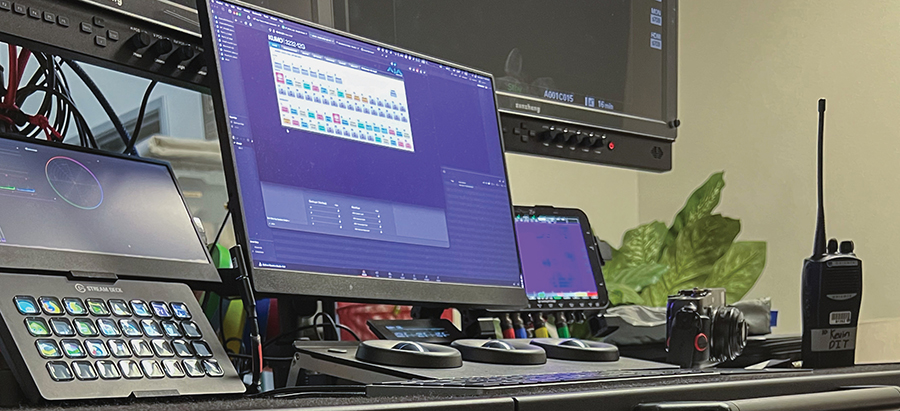
Describe the kinds of projects you work on and how you source jobs.
I primarily work on commercials for sports and pharmaceutical companies as well as CPG, personal care, and apparel brands, often by way of personal reference. Each project is usually about a day, but a longer job might last five days or up to ten weeks. Taking on shorter jobs means I work with a diverse group of people and projects, solving for different challenges…it’s like trying to solve a never-ending Rubik's Cube. Learning to work with such an eclectic mix of personalities, gear, and conditions has helped make me be better at what I do.
Tell us more about the kinds of challenges you face on set.
Whether I’m working with a different camera, trying to achieve a set look for the actors, or the project has a certain style, there's a never-ending permutation of factors to make each shoot happen, which is challenging to navigate. There’s always something new to try to figure out or troubleshoot, and often, just as soon as I think I've got it, something changes and I have to figure that out; shooting against an LED wall is just one example.
What’s your experience with LED walls so far?
It’s been fun to step into that environment and work with the stage tech managers to figure out how to eliminate flicker in an image, and make everything sync. There’s something rewarding about using the “hive mind” to work around some of these challenges and make the image play right with the camera, whether determining the right gen lock on cameras to keep everything in sync or making a shot look real so everyone on set can understand the vision. It’s both difficult and exciting for me to try to help people see what is or is not there on the LED wall and provide guidance on decisions that can make the shot look more realistic, make it feel more natural for the actors, or give the director the feel that they're looking for.
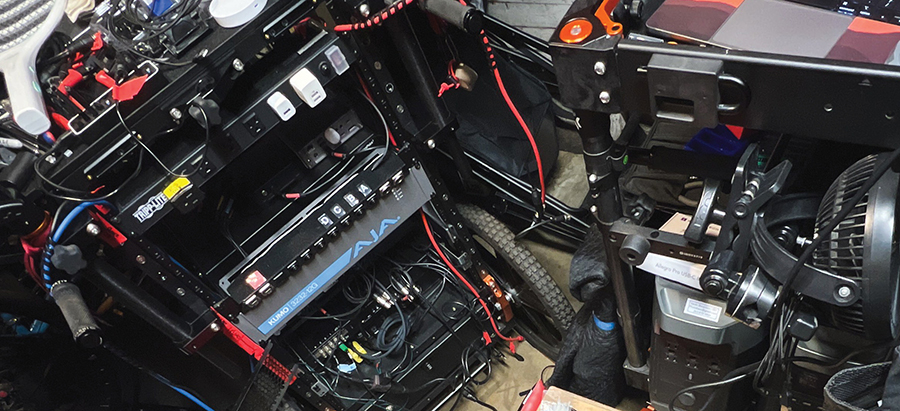
Describe your technical setup.
I work primarily from my DIT cart, but I have a mobile setup in case I must work on a location where a few hundred pound cart is too cumbersome, like a boat or rooftop. On the cart, I have a computer that runs my Livegrade technology, monitors, and the video signal path from the camera, whether it's wireless or tethered through cloud products. It’s run through LUT boxes, into the computer, through my router, and distributed to my cart monitors, the DP and director monitors, and the VTR, who usually streams it to remote clients, the hair and makeup vanities village, or anyone else who needs it.
I mostly receive signals through a wireless video system via SDI into my AJA KUMO 3232-12G router. I might use an AJA HDMI to SDI converter if the wireless receiver is HDMI, but most often, I’m coming in via SDI. For live grading, I use Pomfort’s Livegrade and a tangent panel. The fact that AJA and Pomfort make software integration seamless is awesome, and with 32 ins and outs on the KUMO, I’m excited to move to Livegrade Studio in the future.
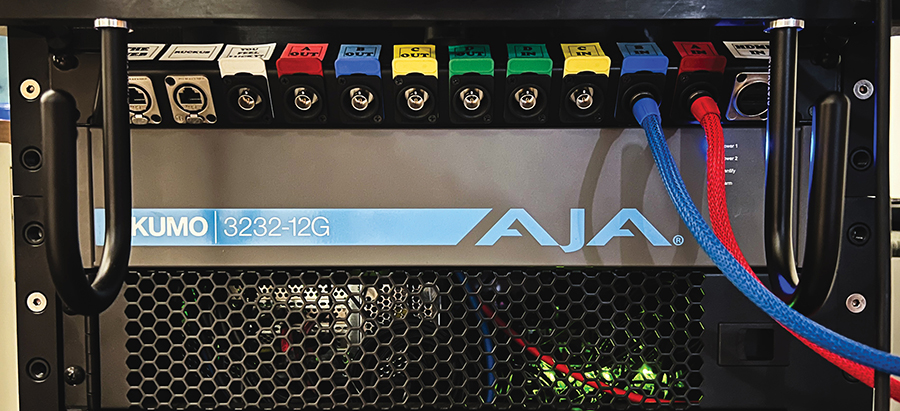
With KUMO, I rest a little easier, knowing it will last me ten plus years, especially in the context of DIT gear, where things change quickly and sometimes I’m lucky to get six months out of a piece of gear. I also keep quite a few AJA Mini-Converters on my cart to support conversion needs whether HDMI to SDI or for distribution amplification; they help me manage curve balls on set, be it monitoring an iPhone, a GoPro, Sony SLR cam, or other capture device. Having a nice quiver of AJA Mini-Converters in my toolkit for those moments has saved the day countless times. I’m also looking at integrating AJA ColorBox into my cart for colorspace and HDR format conversions.
Why is routing so important to your work and why KUMO?
As productions grow in complexity, more people on set want access to monitors to get through the day; having enough ins and outs is crucial to ensure that we all get to go home on time. KUMO provides redundancy and flexibility. I've worked with KUMO 1616 for years; it’s one of the most reliable pieces of gear I've seen in my career. I now use it in my mobile kit, where it’s been functioning perfectly. AJA gear is just so reliable, and makes me feel prepared even as the industry shifts toward 4K HDR monitoring and 12G-SDI becomes more widely adopted on set. I love being ahead of the curve.
What production trends are you paying attention to and why?
I’m keeping an eye on 4K HDR monitoring, which is already starting to happen on set, but will eventually become the standard, as monitoring and camera technologies become more capable. Remote live grading workflows are also going to continue becoming more common; the process will be much smoother in the future.
Virtual production and LED walls will also become more common as the tools become more accessible. I see them being used to replace process trailers where vehicle shots are complicated and inherently dangerous to shoot. Having people on a stage in a built environment, where there's so much more control, also means that we're not dealing with, or causing, huge traffic jams; it’s just a safer way of working. It also opens a lot of flexibility to shoot a project in a city during a specific time period. Because it gives actors a frame of reference to work with, it can improve performances. The technology is still young, and will only get better.
About AJA KUMO 3232 12G
The KUMO 3232-12G router offers increased capacity for medium sized configurations in a compact 2RU profile with support for 12G-SDI/6G-SDI/3G-SDI/1.5G-SDI from 32x 12G-SDI inputs and 32x 12G-SDI outputs. It supports ganged dual and quad port routing control, allowing users to group together multiple inputs and outputs for Dual Link, Quad Link 4K/UltraHD, and 8K/UltraHD2 workflows. The device supports large format resolutions, high frame rate (HFR) and deep color formats, while reducing cable counts when transporting 4K/UltraHD over SDI. It also offers network-based and/or physical control using KUMO CP and CP2, and a USB port for configuring IP addresses via AJA’s eMini-Setup software. www.aja.com/kumo-3232-12g
About AJA Video Systems
Since 1993, AJA Video Systems has been a leading manufacturer of video interface technologies, converters, digital video recording solutions and professional cameras, bringing high quality, cost effective products to the professional broadcast, video and post production markets. AJA products are designed and manufactured at our facilities in Grass Valley, California, and sold through an extensive sales channel of resellers and systems integrators around the world. For further information, please see our website at www.aja.com.
All trademarks and copyrights are the property of their respective owners.
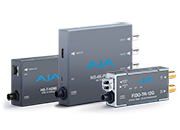 Mini-Converters
Mini-Converters
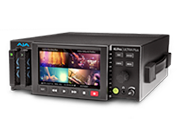 Digital Recorders
Digital Recorders
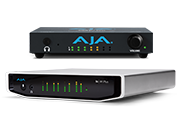 Mobile I/O
Mobile I/O
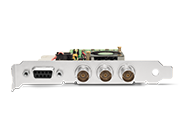 Desktop I/O
Desktop I/O
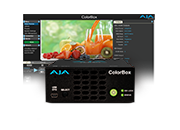 Color
Color
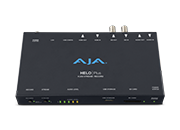 Streaming
Streaming
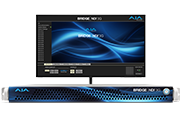 IP Video/Audio
IP Video/Audio
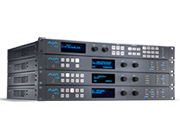 Frame Sync
Frame Sync
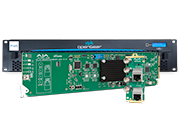 openGear
openGear
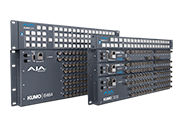 Routers
Routers
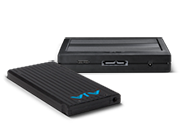 Recording Media
Recording Media
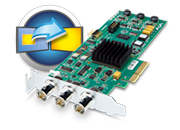 Developer
Developer
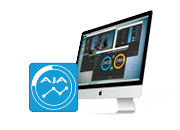 Software
Software
